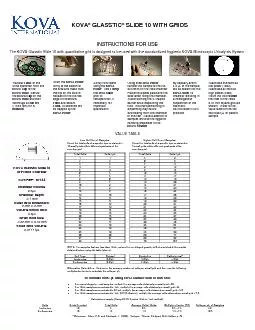PPT-Growth Grids
Author : lindy-dunigan | Published Date : 2017-04-29
August 2013 3 Growth Grid Categories I nfants and children lt 24 months of age Children 24 months and older Pregnant women Which grids do we show Infants and children
Presentation Embed Code
Download Presentation
Download Presentation The PPT/PDF document "Growth Grids" is the property of its rightful owner. Permission is granted to download and print the materials on this website for personal, non-commercial use only, and to display it on your personal computer provided you do not modify the materials and that you retain all copyright notices contained in the materials. By downloading content from our website, you accept the terms of this agreement.
Growth Grids: Transcript
Download Rules Of Document
"Growth Grids"The content belongs to its owner. You may download and print it for personal use, without modification, and keep all copyright notices. By downloading, you agree to these terms.
Related Documents














